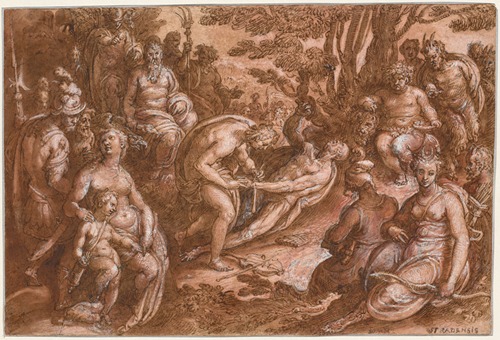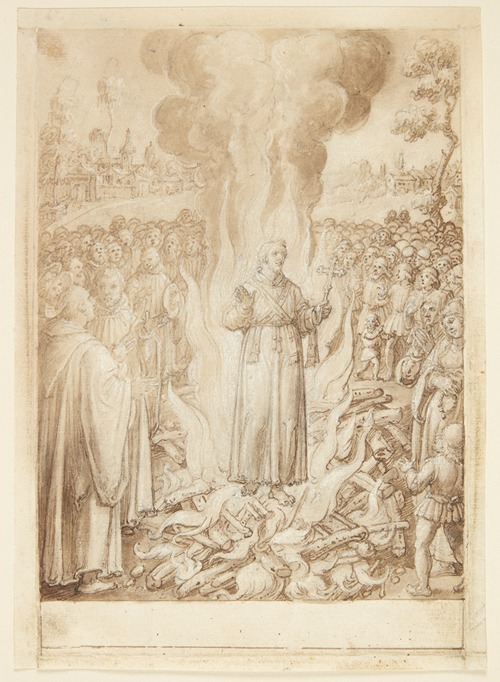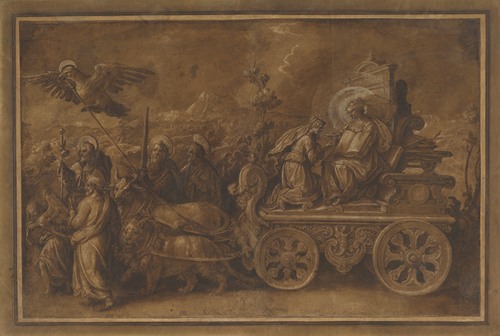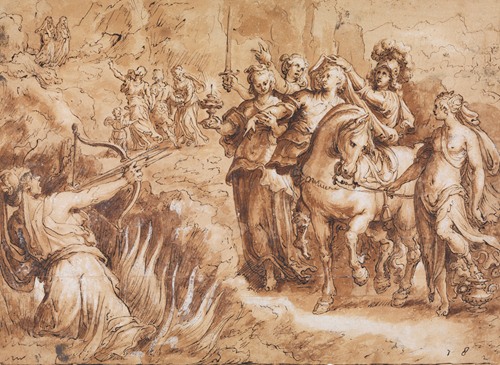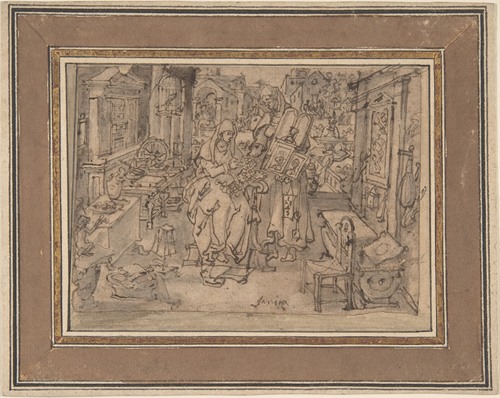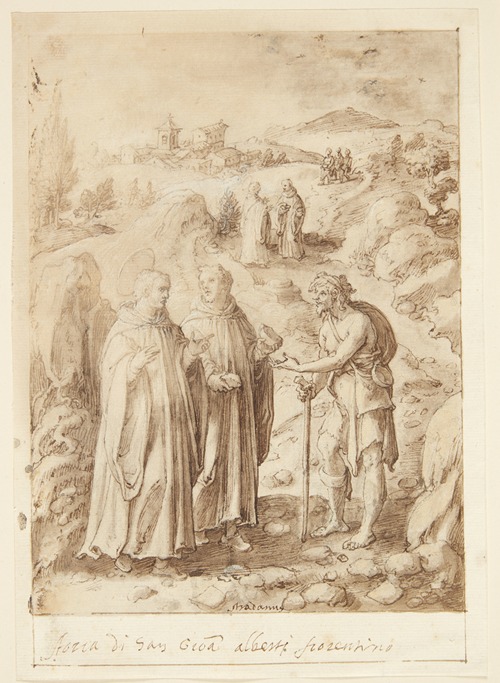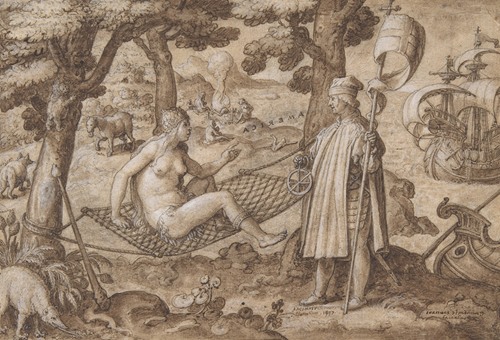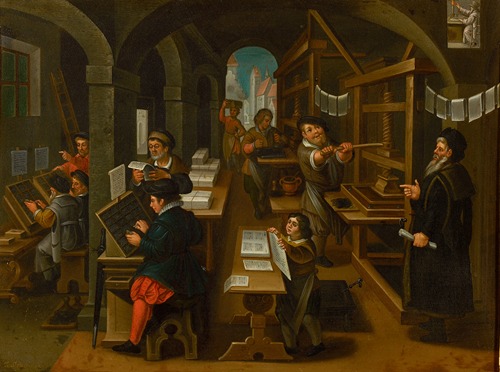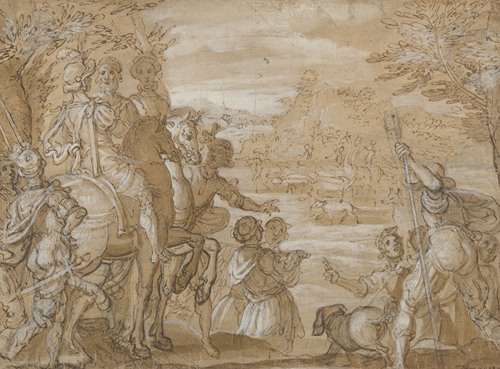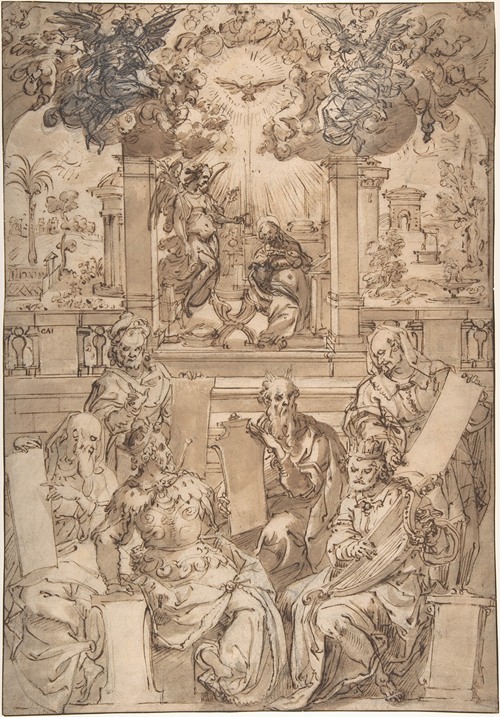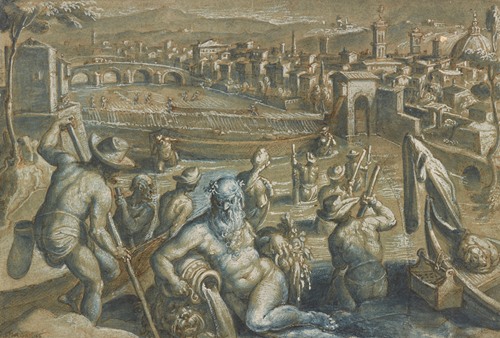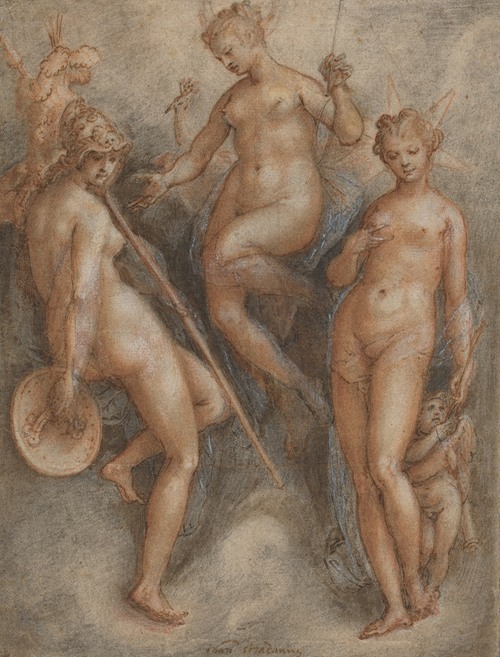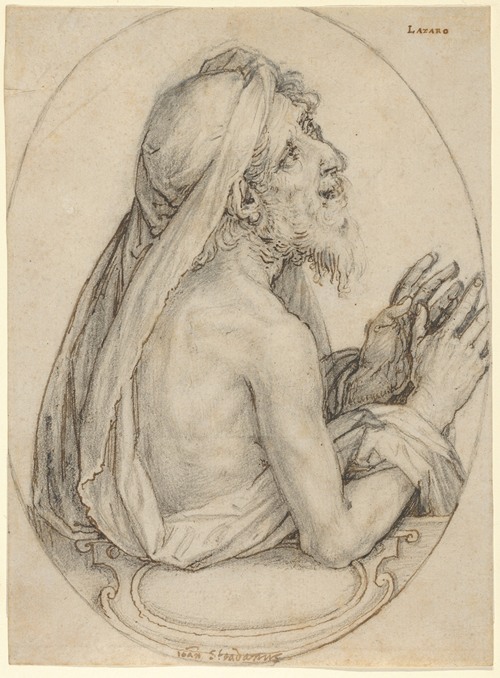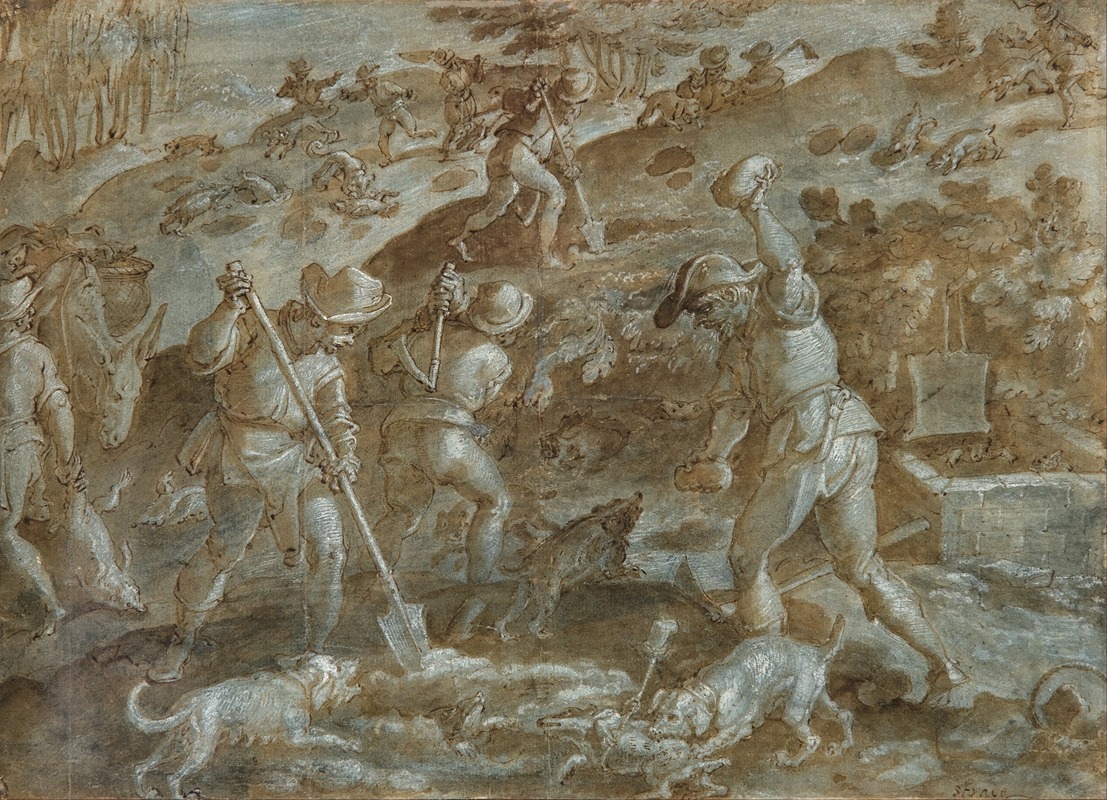
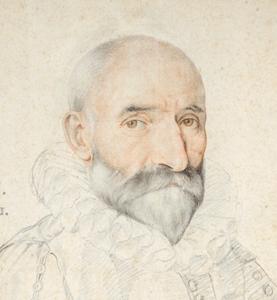
Stradanus, Johannes Stradanus, Jan van der Straet or Giovanni Stradano was a Flemish artist active mainly in 16th-century Florence, Italy. He was a wide-ranging talent who worked as an easel and fresco painter, designer of tapestries, draughtsman, designer of prints and pottery decorator. His subject range was varied and included history subjects, mythological scenes, allegories, landscapes, genre scenes, portraits, architectural scenes and animals. After training in his native Flanders, he left his home country and ultimately settled down in Florence, Italy. He became a prominent court artist to the Medici during the second half of the 16th century and worked on the many decorative projects of the court. Stradanus also produced large altarpieces for the most important churches in Florence.
He was a prolific designer of prints which were circulated widely throughout Europe for many centuries. Through his knowledge of Florentine and Italian art and his international contacts with engravers and editors in Antwerp, Stradanus contributed to the development of printmaking. He was one of the earliest members of the prominent Accademia e Compagnia delle Arti del Disegno established in Florence in 1563. Stradanus also worked on various commissions in Rome. He resided from Napels in 1576 and returned to Florence in 1580, where he died.
Born in Bruges, he began his training in the shop of his father. He subsequently continued his training in the workshop of the further unknown Bruges master Maximiliaen Francken (from 1535 to 1537). He later moved to Antwerp where he studied from 1537 to 1540 in the workshop of Pieter Aertsen, a Dutch genre painter active in Antwerp. There he mastered the visual language of the Renaissance and the ability to depict complex compositions. In 1545 he was registered under the name Hans vander Straten as a master painter in the Antwerp guild of Saint Luke. In Antwerp he moved in the circle of the Romanists, i.e. Northern artists who had traveled to Italy and upon their return to their home country created a Renaissance style, which assimilated Italian formal language.
As was common at the time, he left his home country to travel to Italy to complete his studies. He traveled first to Lyon where he may have worked with the Dutch painter Corneille de la Haye. He then moved on to Venice where he spent a few months. In Venice he met the Flemish carpet weaver Jan Rost who headed up the newly established Arazzeria Medicea, the personal weaving workshop in of Florence of the Grand Duke of Tuscany Cosimo I de' Medici. Rost encouraged Stradanus to travel to Florence for work. He followed the advice and reached Florence in 1550, where he entered in the service of the Medici Dukes. He became one of the principal assistants of Giorgio Vasari, a painter, architect and the principal advisor of the Medici on art issues. Stradanus carried out his first commissions as a designer of tapestries in the Arazzeria Medicea. He designed a number of scenes for tapestries and frescoes to decorate the Palazzo Vecchio in Florence and the Medici Villa at Poggio a Caiano, projects that were under the general direction of Vasari and executed by the about 20 assistants in Vasari's workshop.
During the period from 1550 to 1553, he spent time in Rome to work on commissions. Here he assisted Francesco Salviati and also worked with Daniele da Volterra on the decoration of the Vatican Belvedere. Some time between 1550 and 1555 Stradanus married Lucrezia di Lorenzo Guardieri. Two children from this marriage were Lucrezia (before 1556) and Scipione (1556-1612). Scipione became an artist and collaborated with his father on some projects. Stradanus became financially successful and he was able to acquire a house and other possessions as well as donate substantial sums to religious institutions. One of these was the Sant'Agata Monastery, where his daughter Lucrezia became a nun in 1569.
Stradanus worked in Florence in a milieu that included Vasari, Bronzino, Allori and Salviati. Stradanus was one of the earliest members together with the aforementioned artists of the Accademia e Compagnia delle Arti del Disegno, after its establishment was approved by the Medici court on 13 January 1563 at the request of Vasari. The Accademia e Compagnia delle Arti del Disegno acted both as a guild for all working artists in Florence and an institution for education in the arts. Stradanus later became a consul of this institution. He also taught classes at the Accademia and one of his pupils was Antonio Tempesta. He played a key role in the design of the tomb of Michelangelo who died in 1564. Stradanus also worked on various ephemeral works created for important public events in Florence. In 1565, he was a member of the team of painters and sculptors who executed the large-scale decorations at the occasion of the entry into Florence of Joanna of Austria, Grand Duchess of Tuscany on the occasion of her wedding with Francesco I de' Medici, Grand Duke of Tuscany. The overall direction of the project was in the hands of Giorgio Vasari.
Stradanus was one of the artists involved in the decoration of the Studiolo of Francesco I, the small, windowless barrel-vaulted room in the Palazzo Vecchio commissioned by Francesco I de' Medici and completed between 1570 and 1575 after designs by Vasari. The room was a Wunderkammer (Hall of Wonders), containing a vast collection of rare and precious items such as gems, medals, precious metals, carvings, pharmaceuticals and animal exhibits. Representations of the four elements (earth, air, fire and water) covered each wall. Stradanus contributed two paintings to the decoration of the Studiolo: The Alchemist's Studio and Circe transforms the companions of Ulysses.
In the early 1570s Stradanus seems to have become independent of the court and Vasari. By this time the relationship between Stradanus and Vasari had soured and Vasari even tried to prevent Stradanus from gaining certain commissions. During this period he created a number of easel paintings. He had started to gain on his own commissions for large altarpieces for the most important churches of Florence, starting with the Santa Croce in 1569, which was followed by the Santissima Annunziata, the Santo Spirito, the Santa Maria Novella and other churches. He was also gradually working more outside Florence in places such as Pisa, Prato, Arezzo and Forli. In 1576 he moved to Naples where he was employed by he newly appointed vice-roy of Naples John of Austria. He visited around 1578 Antwerp possibly traveling from Naples in the company of John of Austria who had been appointed governor of the Spanish Netherlands. At that time Antwerp was the most important centre of printing and publishing in Europe. Following this visit, he began to design engravings for the Antwerp printers, eventually producing a large number of drawings destined to be translated into prints. Stradanus collaborated with printmakers Hieronymus Cock and the Galle family in Antwerp to produce hundreds of prints on a variety of subjects, most of which were repeatedly reproduced and often bound into volumes.
By 1583 Stradanus had returned to Florence. He worked that year for the Pazzi family for whom he painted an extensive series of frescoes for the chapel in Villa Pazzi al Parugiano in Montemurlo near Florence. He worked between 1585 and 1587 on a commission by Alessandro Ottaviano de' Medici (later Pope Leo XI) on frescoes for the chapel of the Palazzo Della Gherardesca in Florence.
He died in Florence on 2 November 1605. He was buried in the Cappella della Compagnia di Santa Barbara of de Santissima Annunziata in Florence. To this day, his tomb is decorated with a bust of the artist, made after a portrait by his son Scipio, together with an inscription referring to his Flemish roots.
